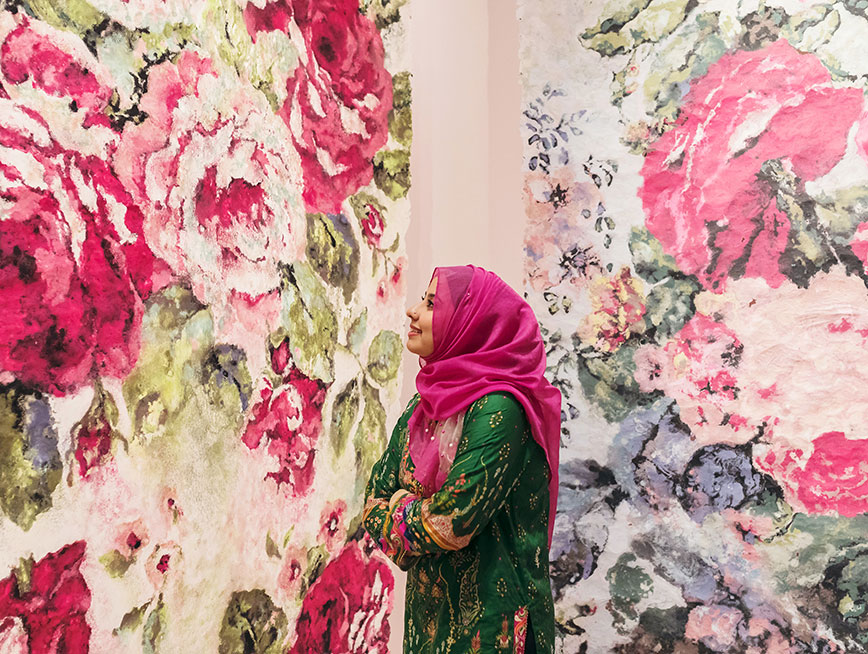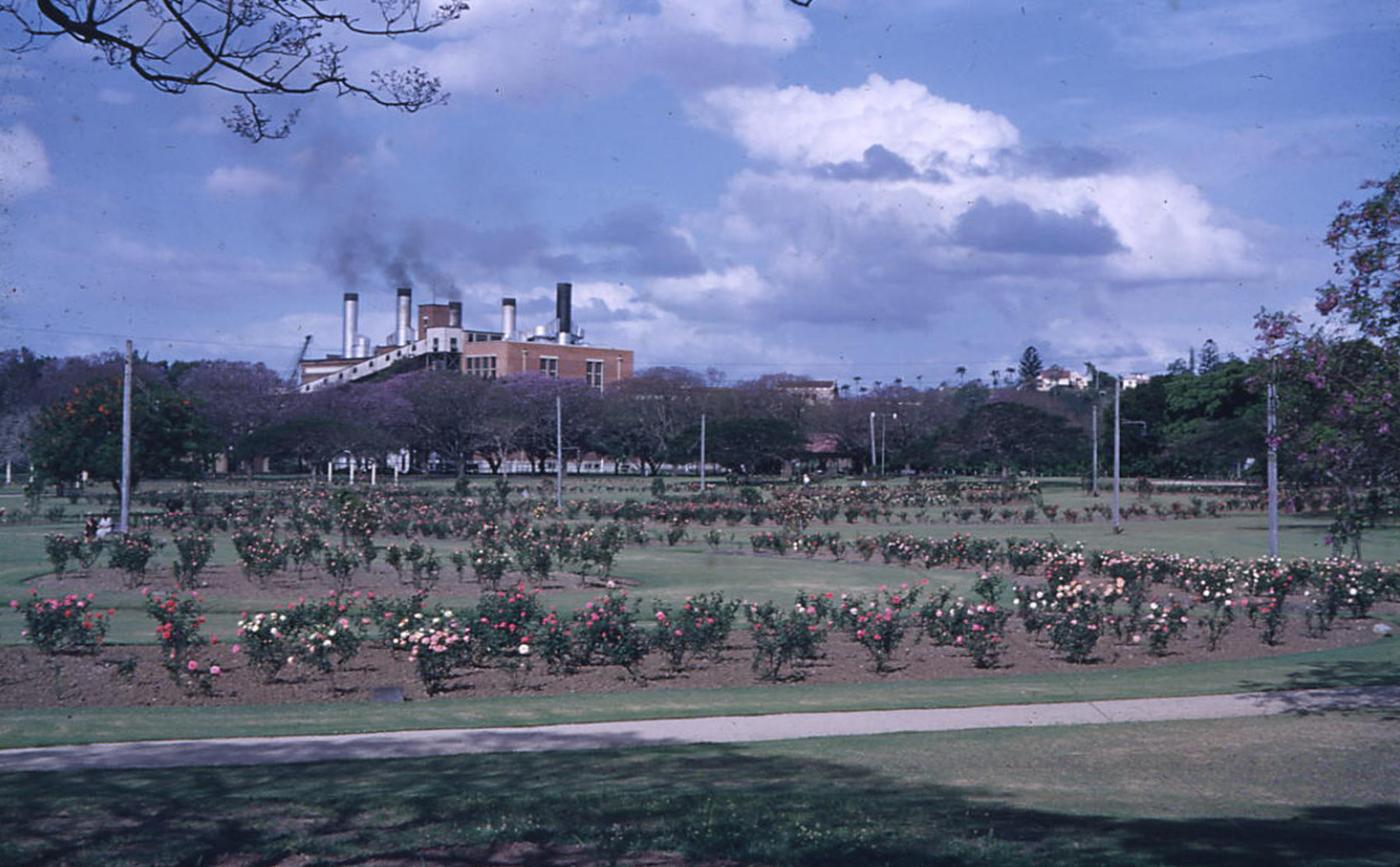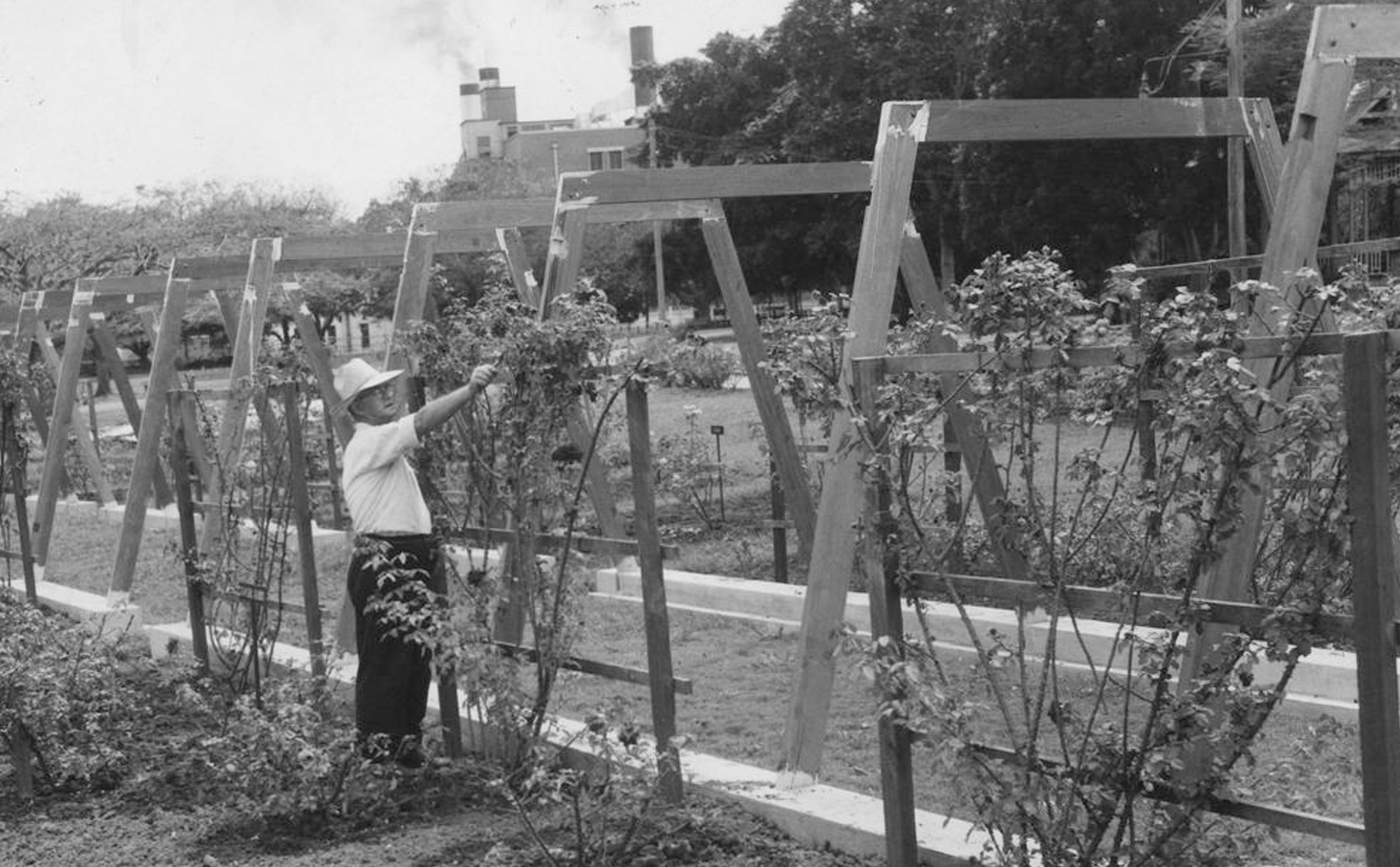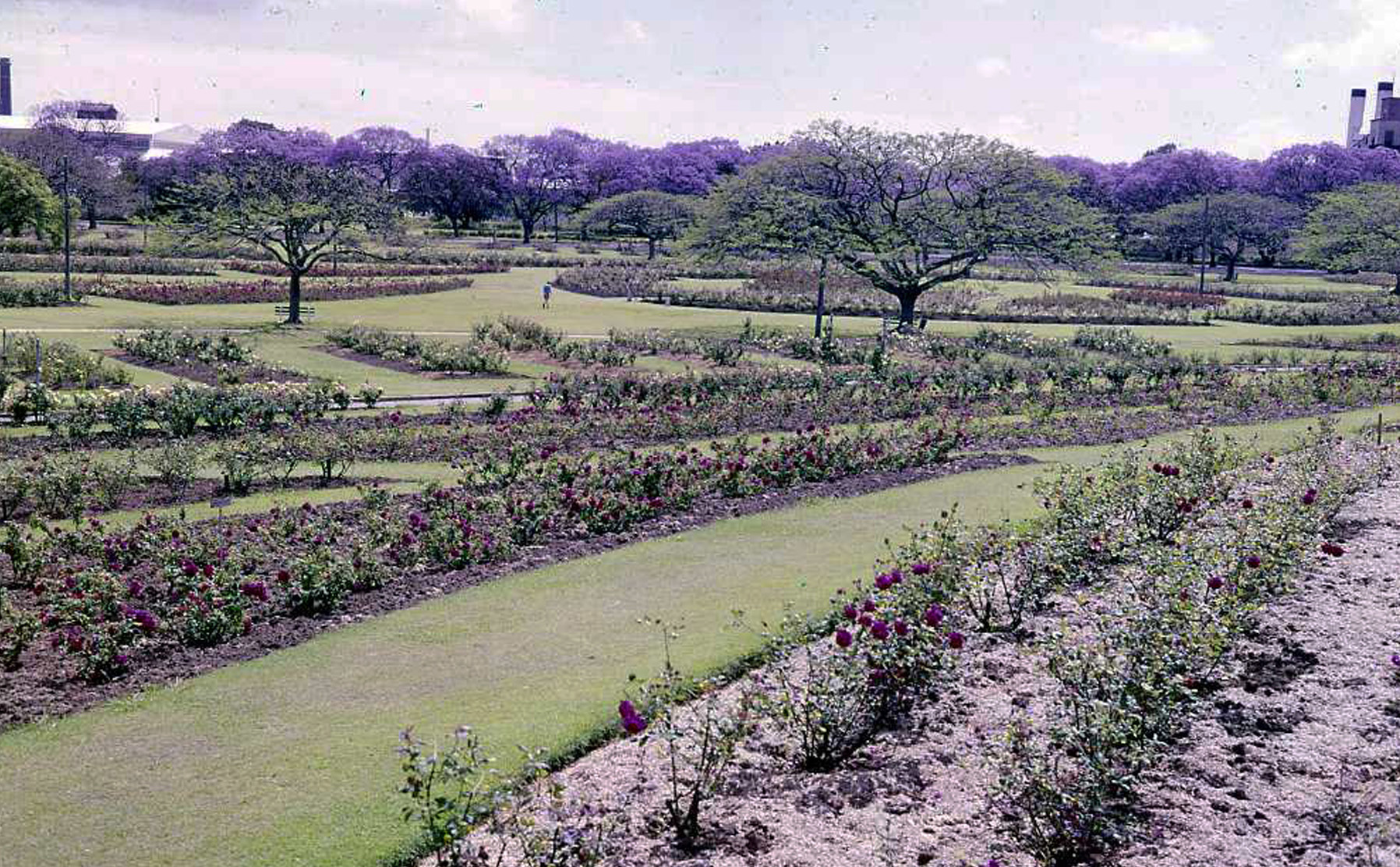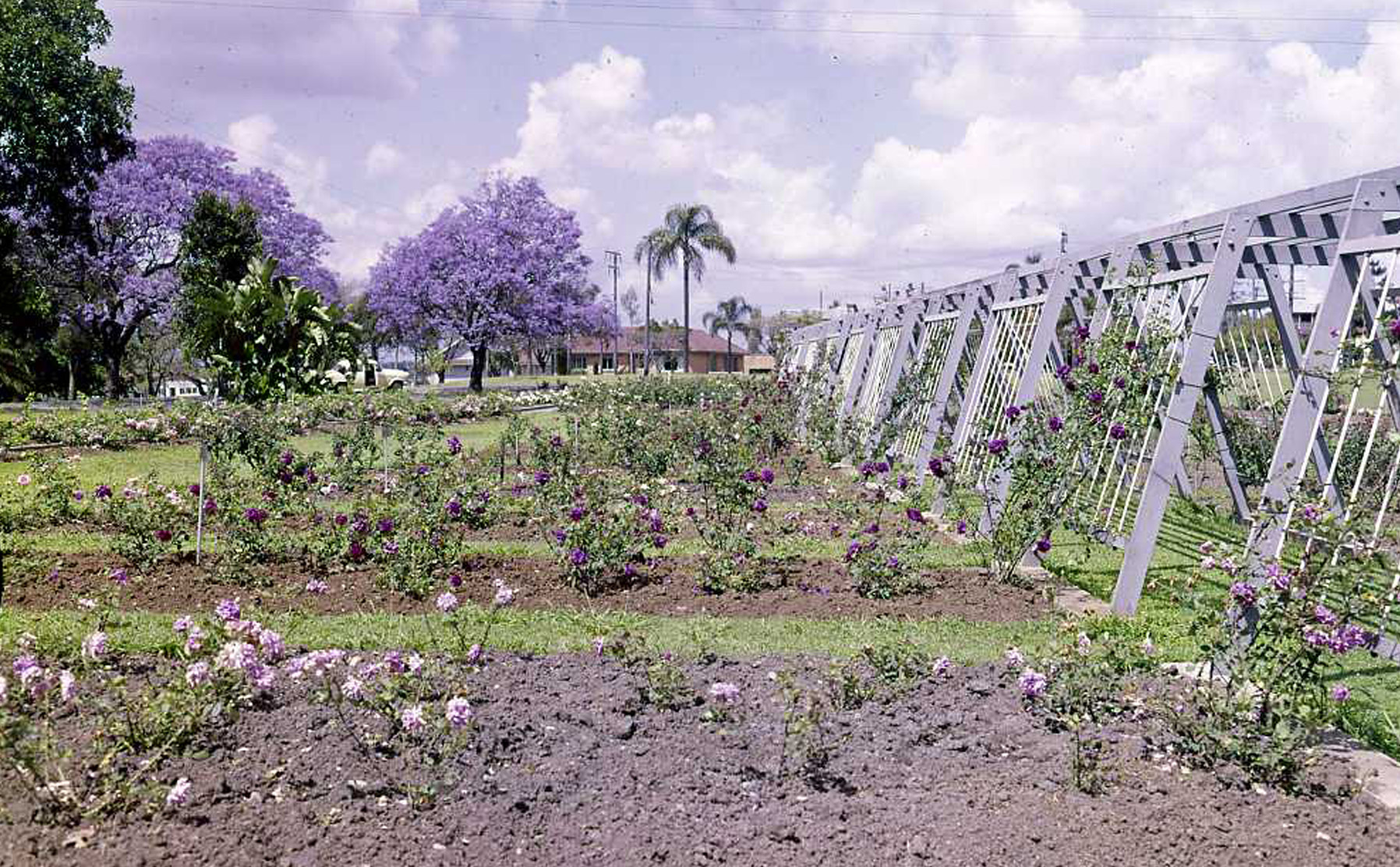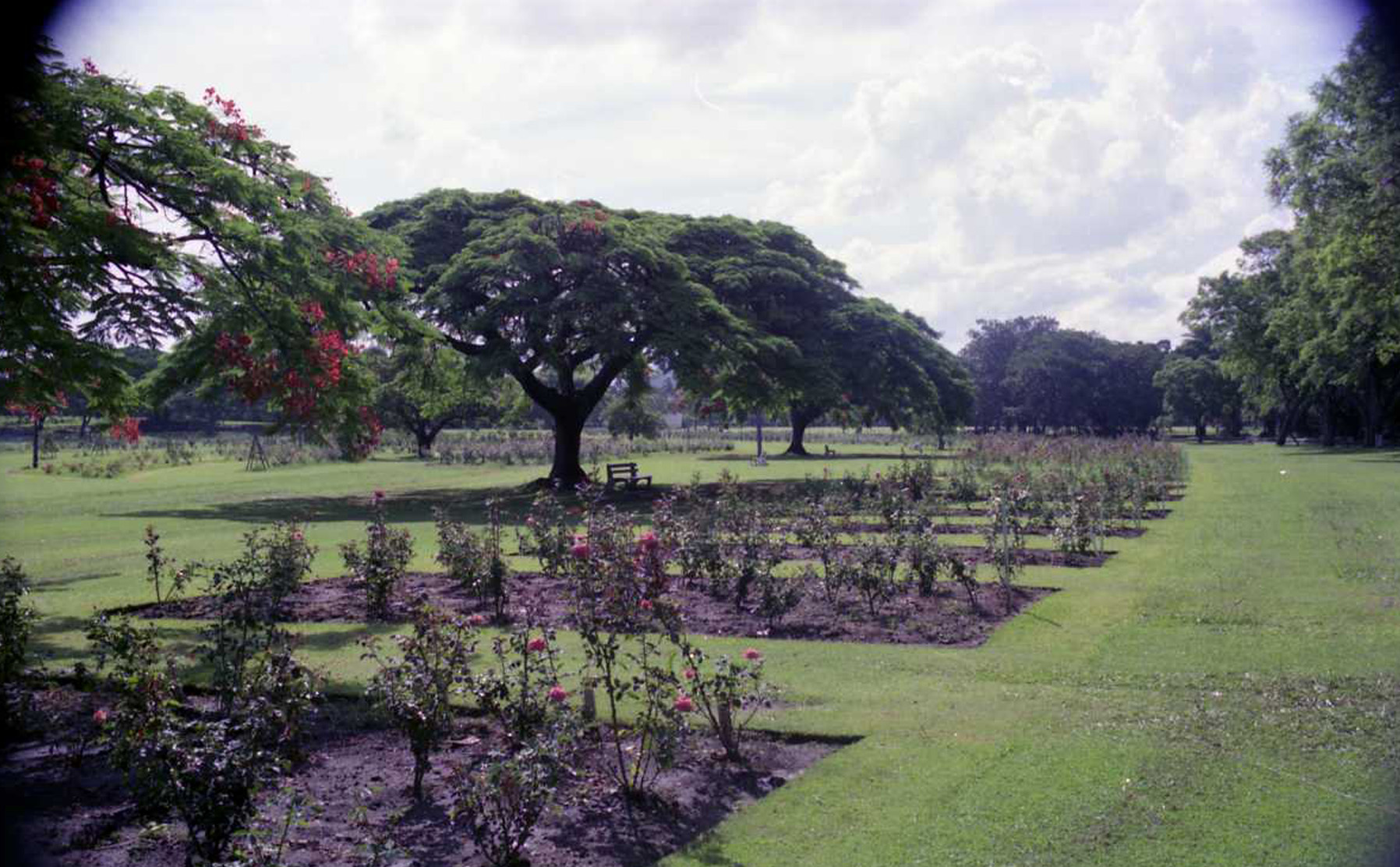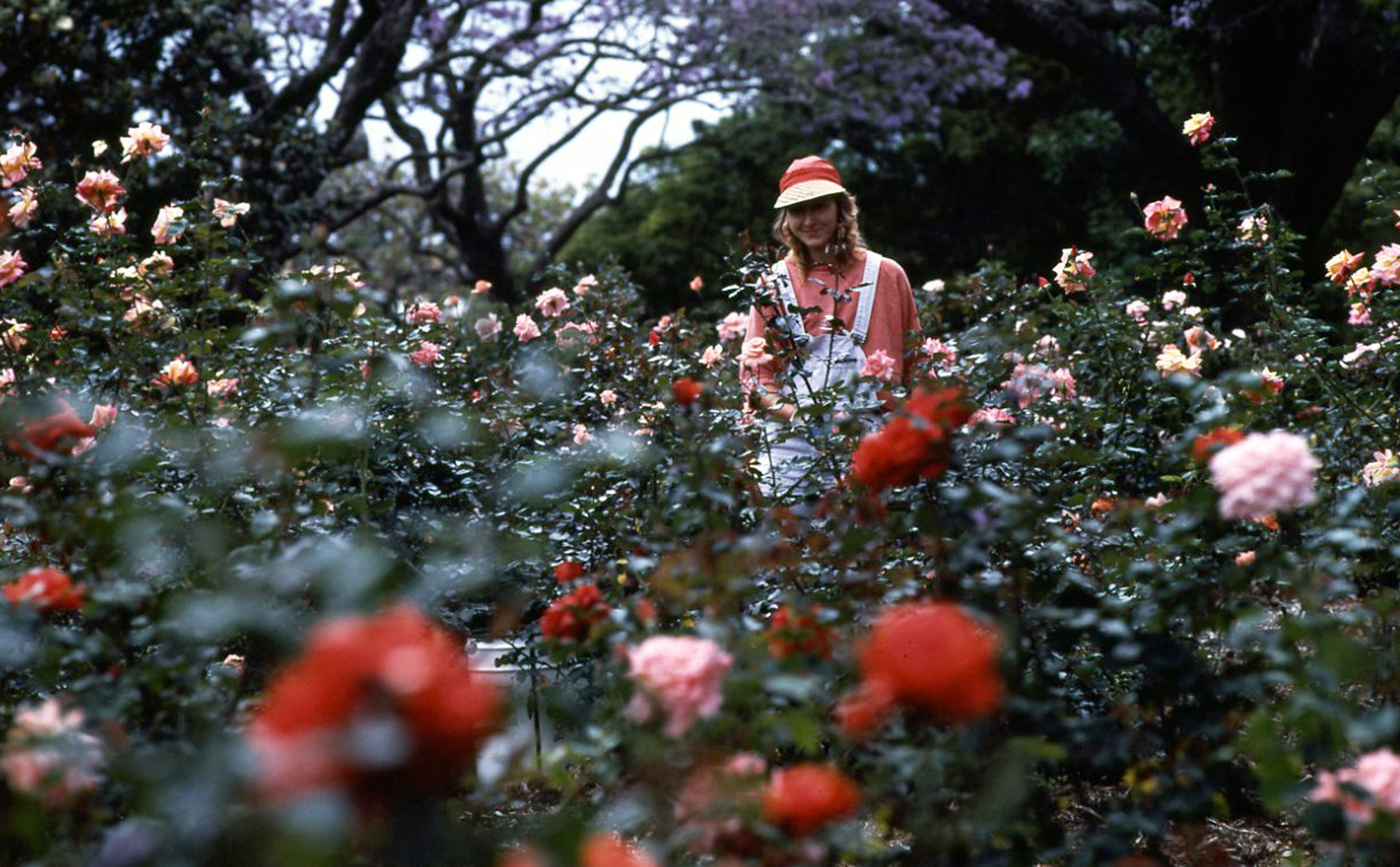Romancing passers-by for more than a century, New Farm Park’s roses have seen flood, war and many a boisterous family picnic.
Rose gardens were among the first council facilities on these lush grounds by the river, alongside a croquet lawn, picnic areas, cricket wickets, tennis courts and football grounds. New Farm Park was officially opened in 1919, with rose plants being laid in the ground some years prior.

In 1928, the then two-acre lawns were enlarged to eight acres and a large rosery was planted with 2,000 tea and hybrid tea roses, with a border of 1,500 polyanthus roses. By July the following year, there was reported to be more than 6,000 rose trees in the park, with more varieties being planted, most of which were gifted to Brisbane City Council by the people of Brisbane
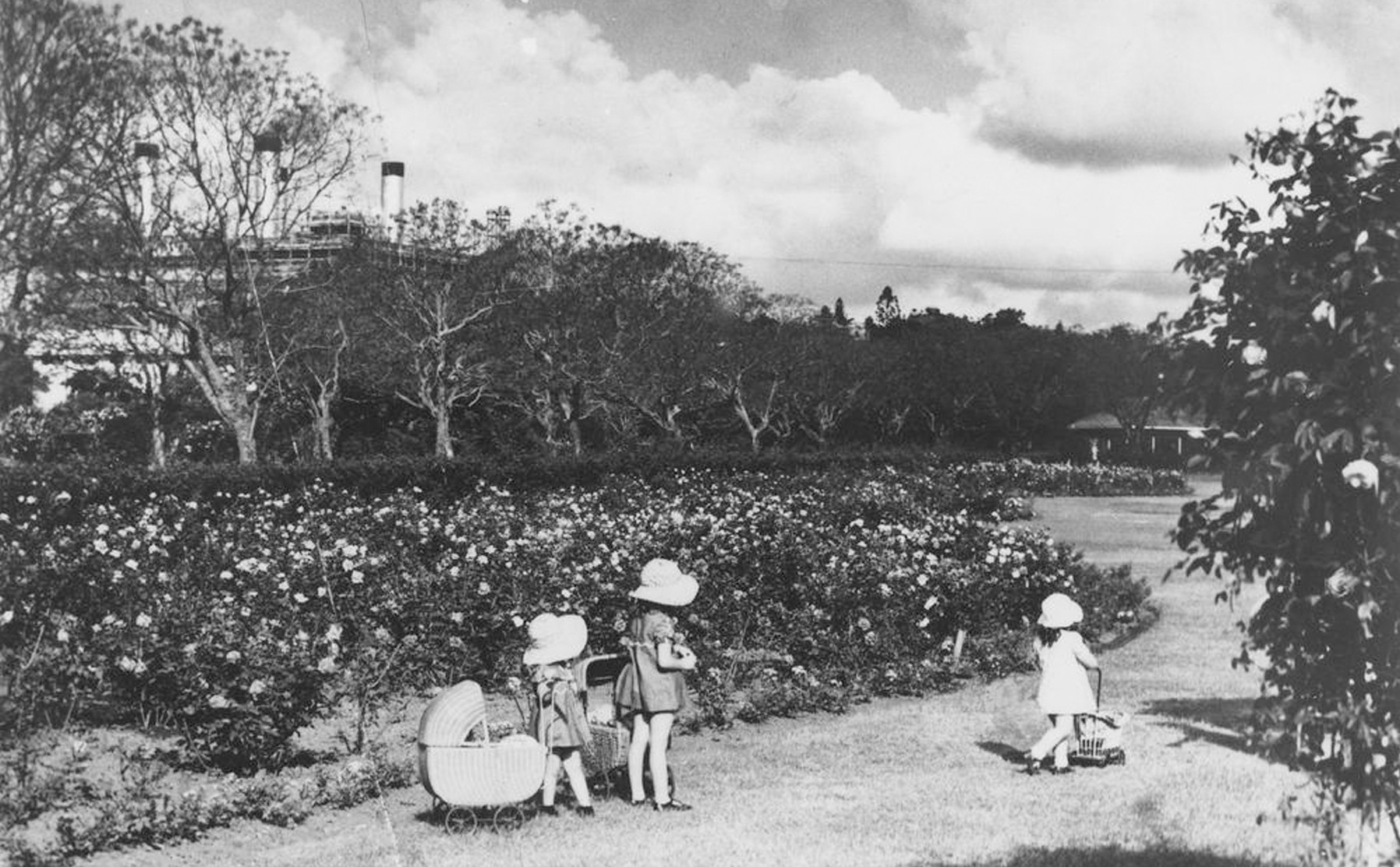
Some 20,000 roses filled the gardens by 1936 and there were 175 frames over which climbing roses were trained. A cherished spot for a picnic or a stroll, the rose gardens also attracted late night visits from amorous couples and were occasionally a place of scandal. “Love amid roses in New Farm Park”, reports Truth magazine in 1945:
If the ghosts of New Farm Park could speak, what tales they could tell! What dramatic plots could be made from the romances which have bloomed and budded in this place, where the scent of thousands of roses is wafted on the night air!
Owing to their beauty and abundance, roses were sometimes gathered from the gardens to adorn a special function. In 1940, 200 New Farm Park roses decorated the Shire Hall in Nundah at an afternoon tea for the Red Cross and in 1941, the Lady Mayoress’ rooms in City Hall were filled with the garden’s finest for what was reported to be a very well-attended bridge party.
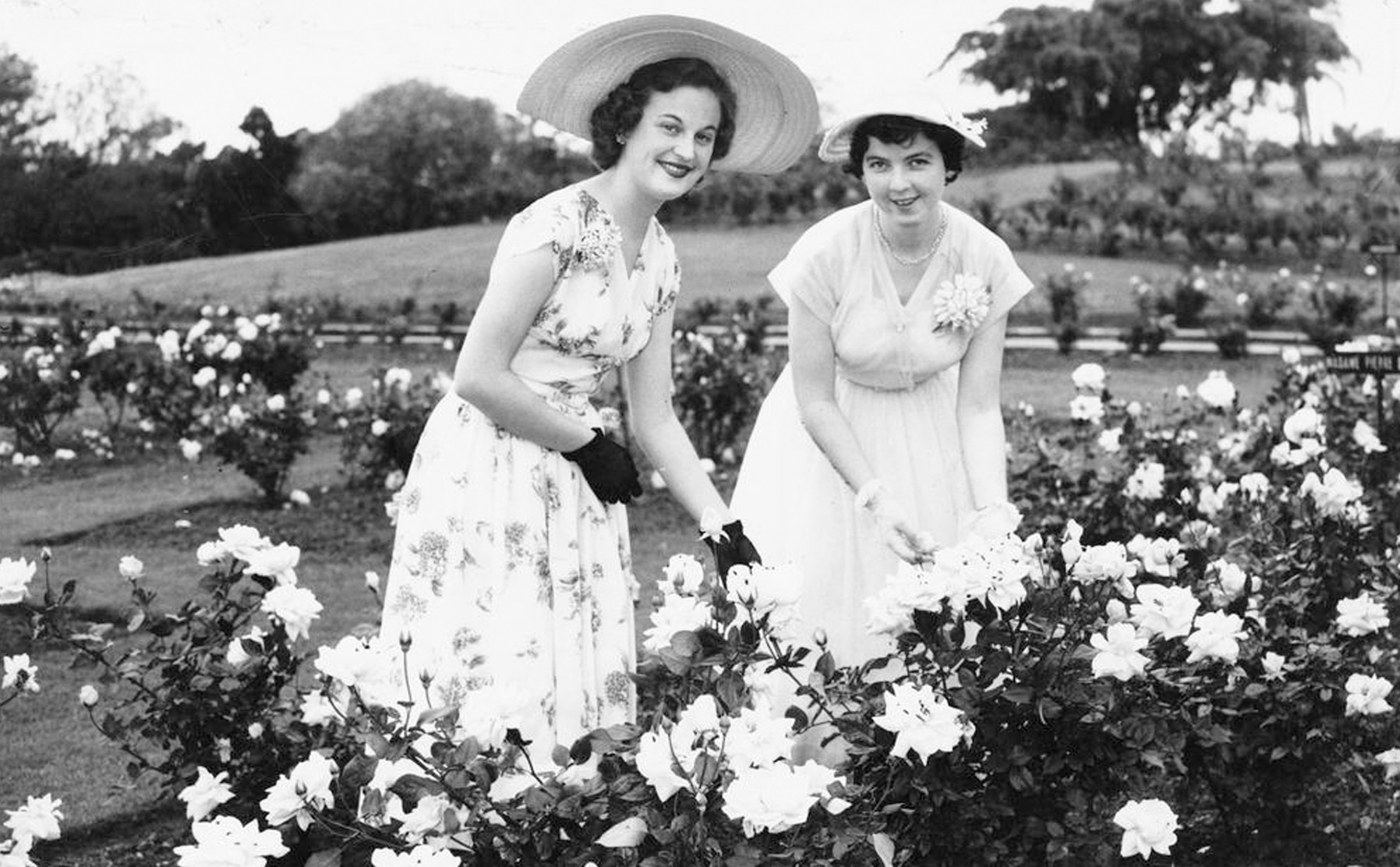
Though mostly admired by park-goers and plucked only on official order, occasionally rose trees were spirited away in the night, necessitating a guard be posted to watch over the sleeping blooms.
The early 1950s saw the redesign of the parks garden beds and the biggest replanting of rose gardens since before the war.
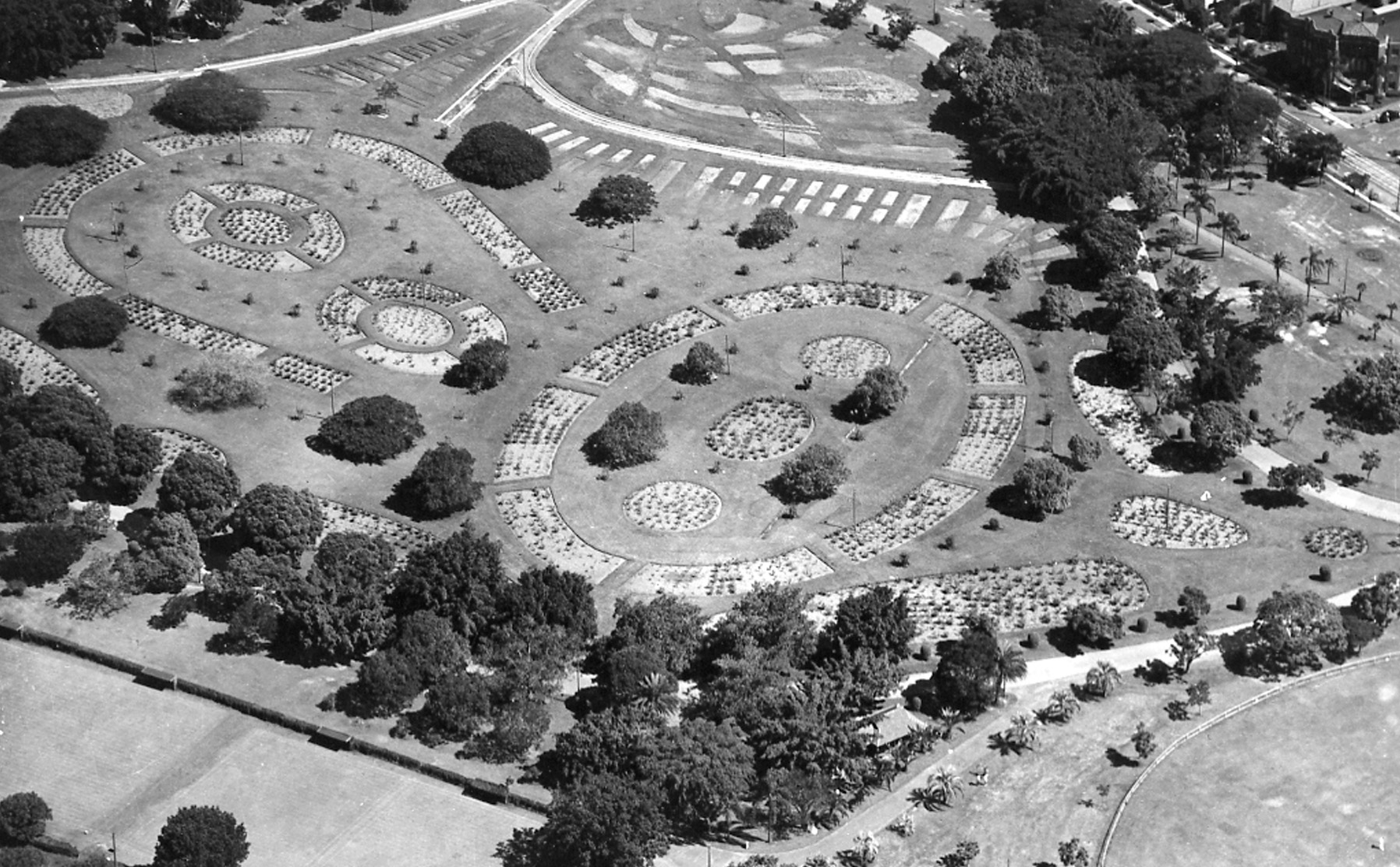
Over the next few decades, the rose gardens continued to flourish, until the devastating floods of January 1974 ravaged the city, leaving much of the park destroyed and the gardens smothered in silt. The beautiful blooms were eventually replanted when the park was restored, though many of the original plants had been lost.
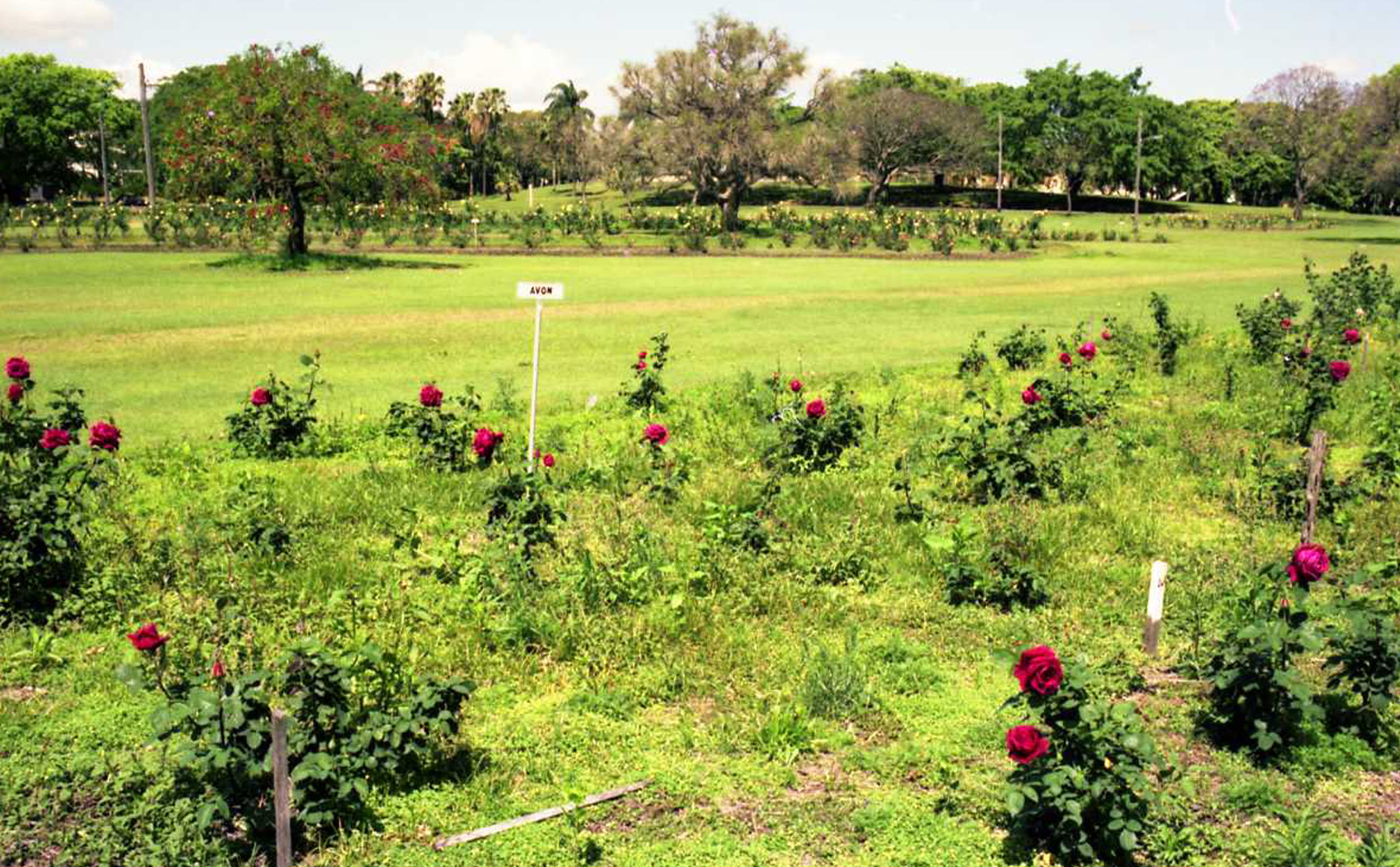
Today, more than 7,000 rose bushes fill the gardens in New Farm Park, the beauty of which remains to be captured by words from a 1933 edition of the Courier Mail:
For many weeks this rose garden will be a delight to rose lovers, especially in the late afternoon, with the slowly flowing river on one side, deep soft grass underfoot, and the magic blue of many jacaranda trees brilliant from the glow of the setting sun, and everywhere the perfume of roses.
Come and visit our very own rose garden in the Museum, with Karen Stone’s towering works of brilliant colour featured in Rearranged: Art of the Flower.

